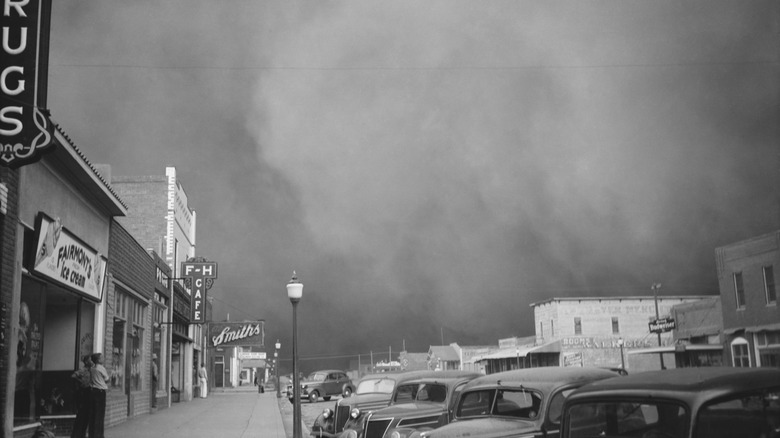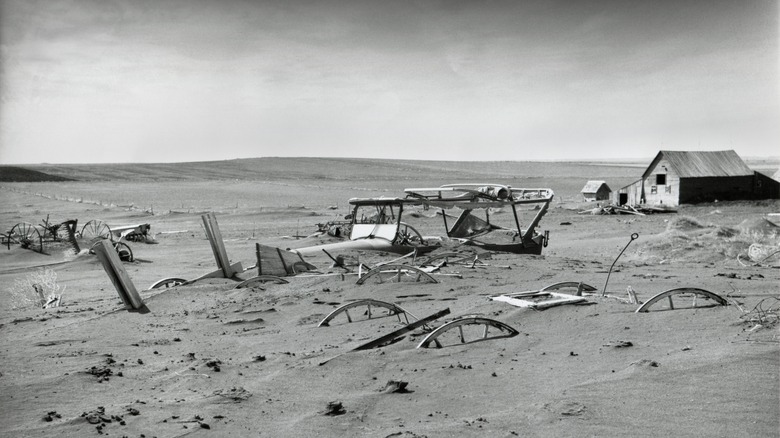How The Dust Bowl Disaster Could've Been Avoided
The Great Depression represented a then-unthinkable level of poverty as the stock market crashed to historic lows. Its causes are debated, but the end result was millions of people losing their jobs as prospective consumers became far more reserved in their spending (via Britannica). In America, over 15 million people were unemployed, facing starvation and homelessness for years. Other nations suffered through similar hardship, with the people of Germany and Japan becoming desperate enough that they turned to the future Axis leaders for salvation.
For rural America, the situation initially might not have seemed like a major issue. As they were responsible for supplying food to millions (and had no Emus to contend with, unlike Australia's Depression-era farmers), it would surely have been no problem for the farmers to feed themselves and their families during the crisis. While this may have been true in some parts, in the Great Plains environmental changes and decades-long land mismanagement yielded fatal consequences throughout the Depression.
Gentler farming practices would have kept the Dust Bowl at bay
The Dust Bowl has its origins in the Homestead Act, where massive amounts of land were made available by the government's westward settlement and restriction of Native tribes to reservations (via FDCE). The initially cheap nature of the land led many inexperienced settlers to establish their own farms. Settlers then gradually dug up much of the native grasslands and replaced them with wheat and other crops. When a historic drought hit the region in 1929 the dry and dug-up soil, no longer bound by the absent grassroots, eroded away into a fine dust that was easily carried by the wind. Pneumonia, sun-darkening dust storms, and swarms of opportunistic grasshoppers were just some of the devastating results.
The disaster could have been avoided by considering the measures that caused it. Maximum preservation of the original grasses and topsoil would have been the most crucial step, obviously taking the asphyxiating dust out of the equation. Meanwhile, the Great Plains Shelterbelt, FDR's initiative to re-root the soil with a series of massive windbreaks, would likely still be useful in this alternate world (via Public Radio International), since its trees have proven to be excellent sources of water and nutrients for farmland. With enough foresight, the settlers could have had land that was both productive and impervious to such catastrophes.

